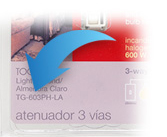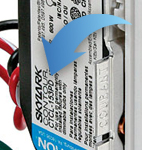
Explore Knowledge Articles
Lutron's LEAP API Integration Protocol
This article describes LEAP, how it communicates with 3rd parties, what products/companies integrate with Lutron systems via LEAP, and how to use LEAP to integrate with non-Lutron products and applications.
Skip To: What is LEAP? | How Does LEAP Communication Work? | What Integrates with Lutron Systems via LEAP? | How Do I Use LEAP to Integrate with Non-Lutron Products/Applications?
What is LEAP?
Lutron’s Extensible Application Protocol (LEAP) is the protocol by which many 3rd party systems communicate to a Lutron system. Think of it as an upgrade from the classic Telnet Protocol to a more advanced and secure "language" for integration. While Telnet integration with other systems proved to be very capable, and deployed on thousands of projects, technology in the industry has continued to advance (in addition to client needs).
This is where LEAP comes into play:
- Secure – Instead of just utilizing a username and password for security, LEAP uses a pairing process with the 3rd party device that requires verification of physical access and certificate-based authentication over a Transport Layer Security (TLS) connection. This helps provide peace of mind for the client.
- Dynamic – LEAP is more dynamic and allows for configuration reads during setup or runtime, depending upon what is best for the 3rd party system, compared to the Telnet integration with a static configuration file, created when the database was transferred into the system.
One thing is certain, reading the Lutron configuration has never been easier for a 3rd party system. This all leads to a faster and easier deployment for the integrator and removes the need to recreate the list of devices in a system.
How Does LEAP Communication Work?
What Products/Companies Integrate via LEAP?
In most cases, LEAP integration drivers are developed by the 3rd party system manufacturer. As a result, information on how to set up a specific 3rd party system will come from the 3rd party and is often packaged in with the integration driver, the 3rd party software, and the dealer websites.
Lutron works closely with these companies, providing development support and mutual testing of the drivers to ensure that the integration leads to a reliable and effective solution for both the integrator and homeowner.
For the latest list of companies that integrate with Lutron, click here to visit our What's New page to view our Integration list.
How do I use LEAP to integrate with non-Lutron products/applications?
Setting up the LEAP integration is simple. Every Lutron system runs off of a configuration file that is created when the system is designed and commissioned. Whenever you add a dimmer, switch, or keypad to the system, you are adding to the configuration. As you add these devices, name zones, and add engraving text, this information is stored in the configuration. This configuration feeds directly into the LEAP API. Essentially, as you build the system you are also setting up LEAP integration for the system.
Once the Lutron system is up and running, the integrator knowledgeable about the 3rd party system can work through the specific instructions required to connect the 3rd party system to the Lutron processor and pull in the various configuration information that is required for the specific integration.
Are you an Integrator looking to integrate your system(s) with ours via LEAP? Please contact us at Systemsupport@Lutron.com for more details.
This article describes LEAP, how it communicates with 3rd parties, what products/companies integrate with Lutron systems via LEAP, and how to use LEAP to integrate with non-Lutron products and applications.
Skip To: What is LEAP? | How Does LEAP Communication Work? | What Integrates with Lutron Systems via LEAP? | How Do I Use LEAP to Integrate with Non-Lutron Products/Applications?
What is LEAP?
Lutron’s Extensible Application Protocol (LEAP) is the protocol by which many 3rd party systems communicate to a Lutron system. Think of it as an upgrade from the classic Telnet Protocol to a more advanced and secure "language" for integration. While Telnet integration with other systems proved to be very capable, and deployed on thousands of projects, technology in the industry has continued to advance (in addition to client needs).
This is where LEAP comes into play:
- Secure – Instead of just utilizing a username and password for security, LEAP uses a pairing process with the 3rd party device that requires verification of physical access and certificate-based authentication over a Transport Layer Security (TLS) connection. This helps provide peace of mind for the client.
- Dynamic – LEAP is more dynamic and allows for configuration reads during setup or runtime, depending upon what is best for the 3rd party system, compared to the Telnet integration with a static configuration file, created when the database was transferred into the system.
One thing is certain, reading the Lutron configuration has never been easier for a 3rd party system. This all leads to a faster and easier deployment for the integrator and removes the need to recreate the list of devices in a system.
How Does LEAP Communication Work?
What Products/Companies Integrate via LEAP?
In most cases, LEAP integration drivers are developed by the 3rd party system manufacturer. As a result, information on how to set up a specific 3rd party system will come from the 3rd party and is often packaged in with the integration driver, the 3rd party software, and the dealer websites.
Lutron works closely with these companies, providing development support and mutual testing of the drivers to ensure that the integration leads to a reliable and effective solution for both the integrator and homeowner.
For the latest list of companies that integrate with Lutron, click here to visit our What's New page to view our Integration list.
How do I use LEAP to integrate with non-Lutron products/applications?
Setting up the LEAP integration is simple. Every Lutron system runs off of a configuration file that is created when the system is designed and commissioned. Whenever you add a dimmer, switch, or keypad to the system, you are adding to the configuration. As you add these devices, name zones, and add engraving text, this information is stored in the configuration. This configuration feeds directly into the LEAP API. Essentially, as you build the system you are also setting up LEAP integration for the system.
Once the Lutron system is up and running, the integrator knowledgeable about the 3rd party system can work through the specific instructions required to connect the 3rd party system to the Lutron processor and pull in the various configuration information that is required for the specific integration.
Are you an Integrator looking to integrate your system(s) with ours via LEAP? Please contact us at Systemsupport@Lutron.com for more details.


